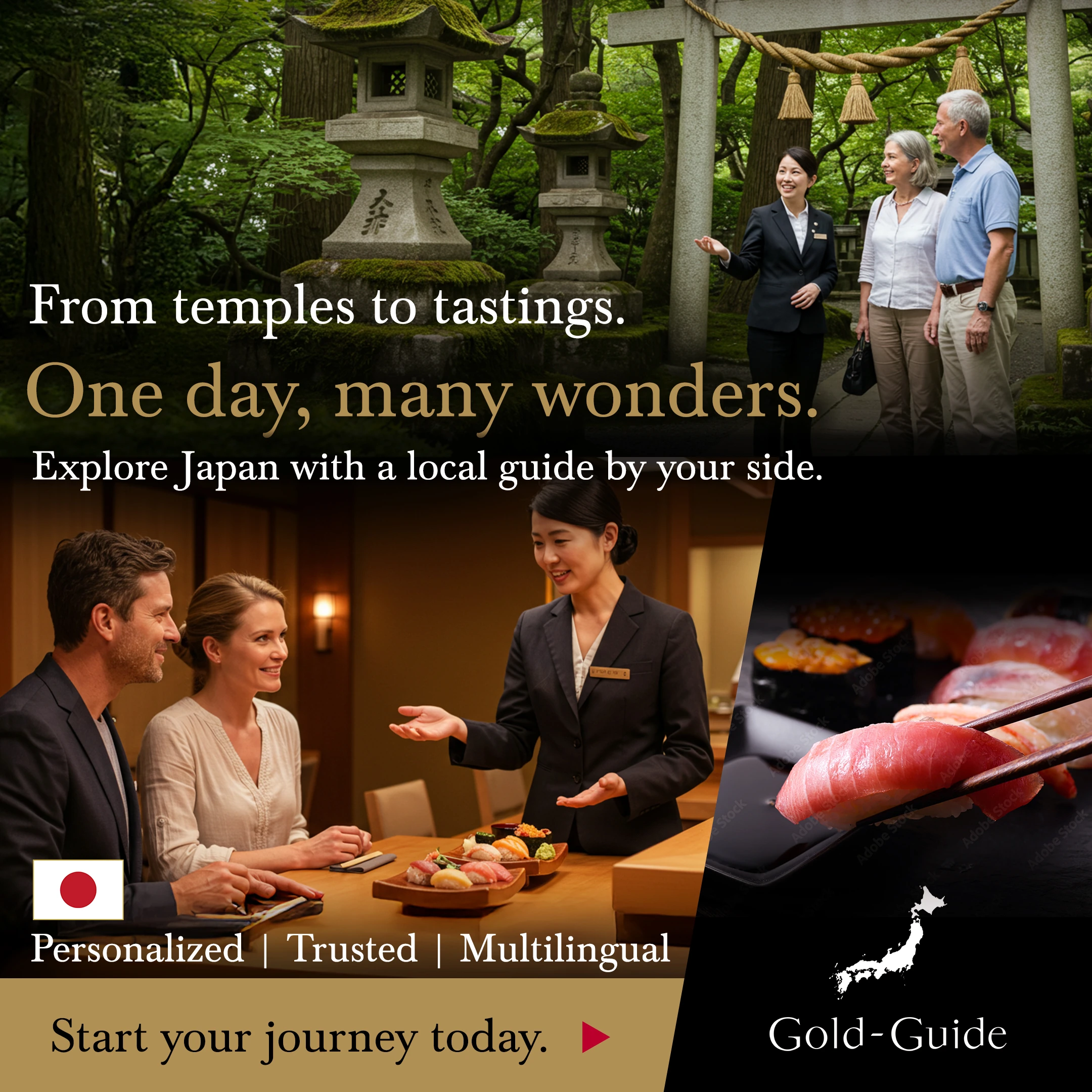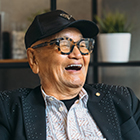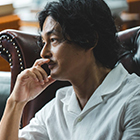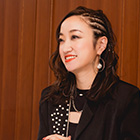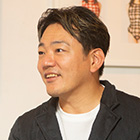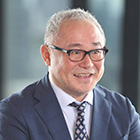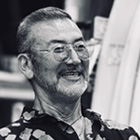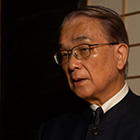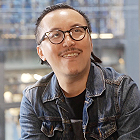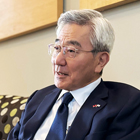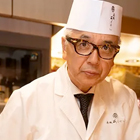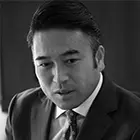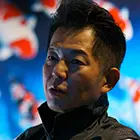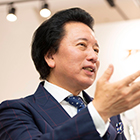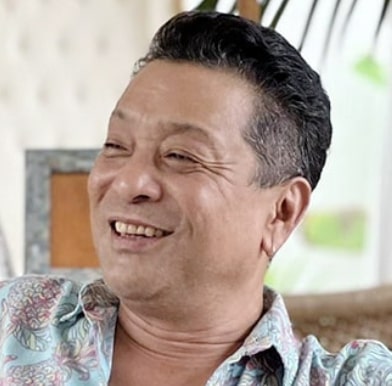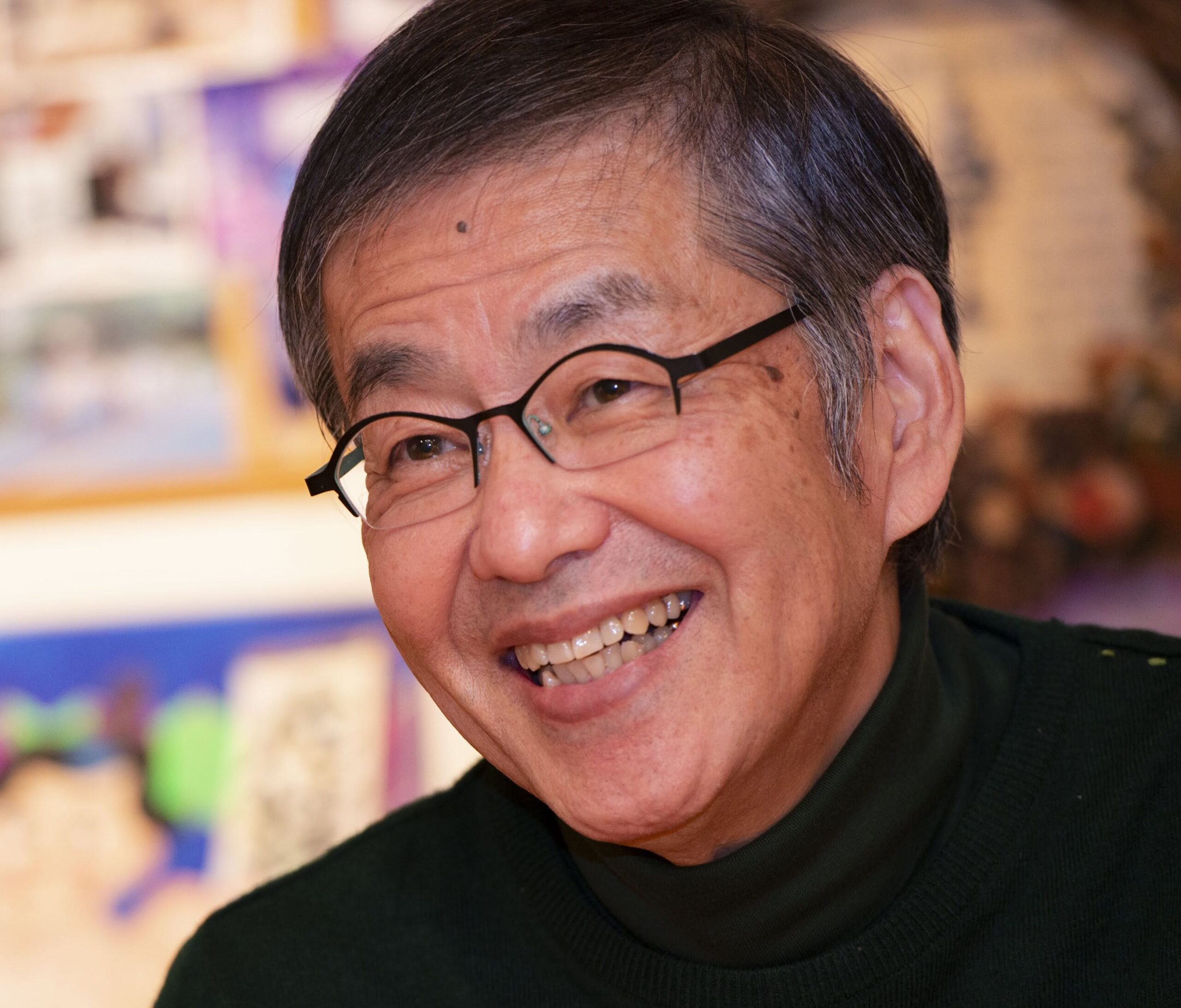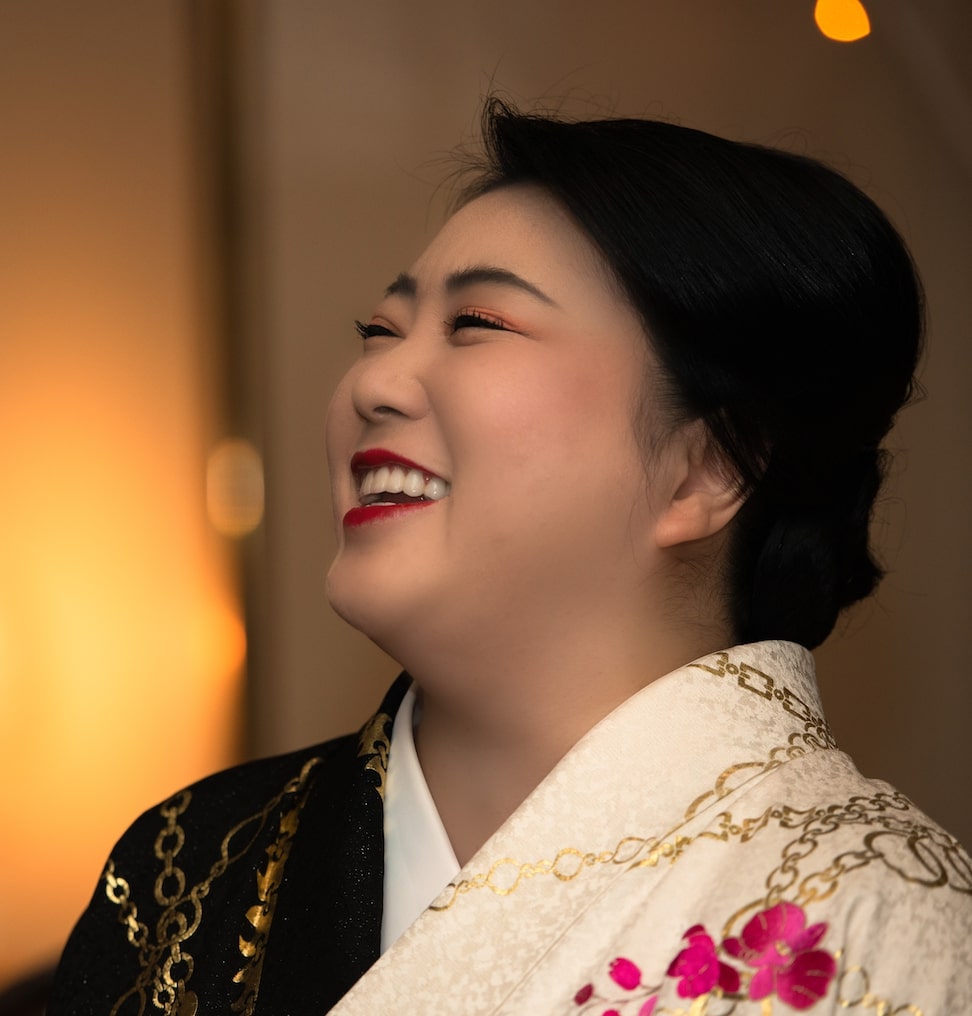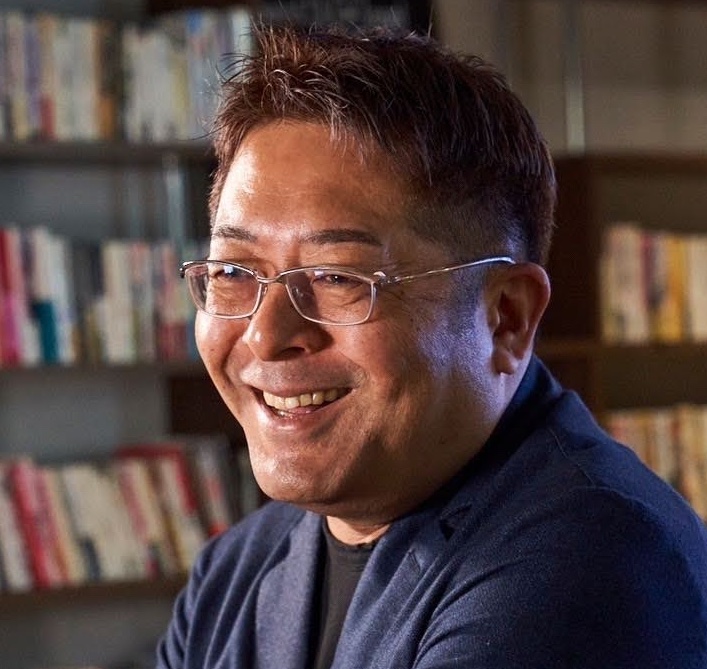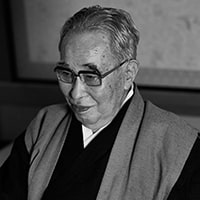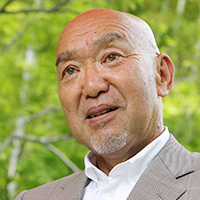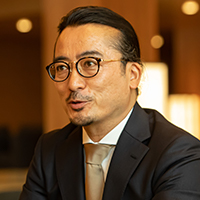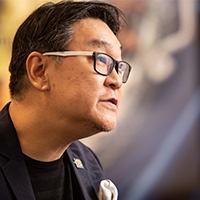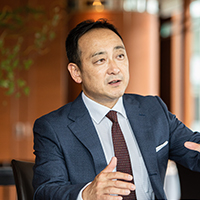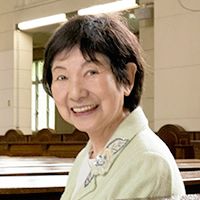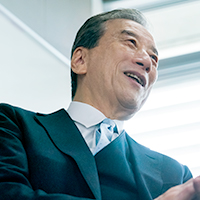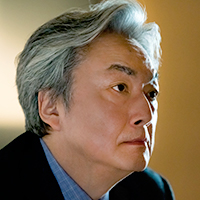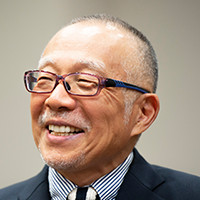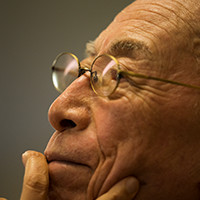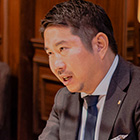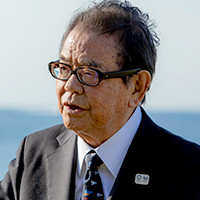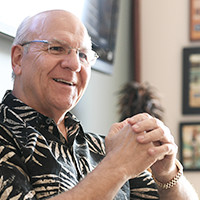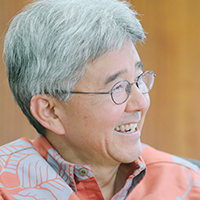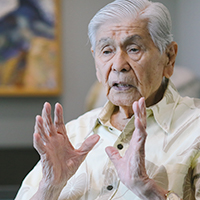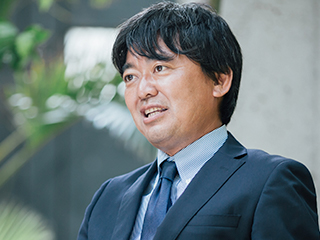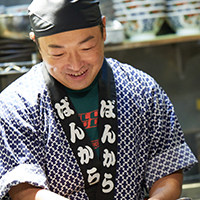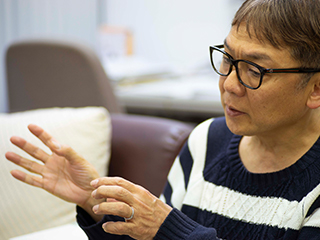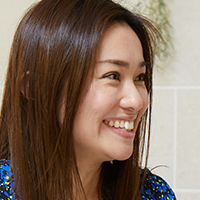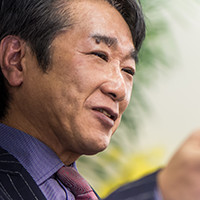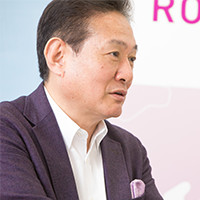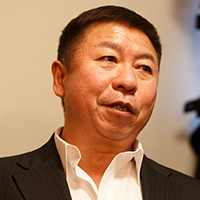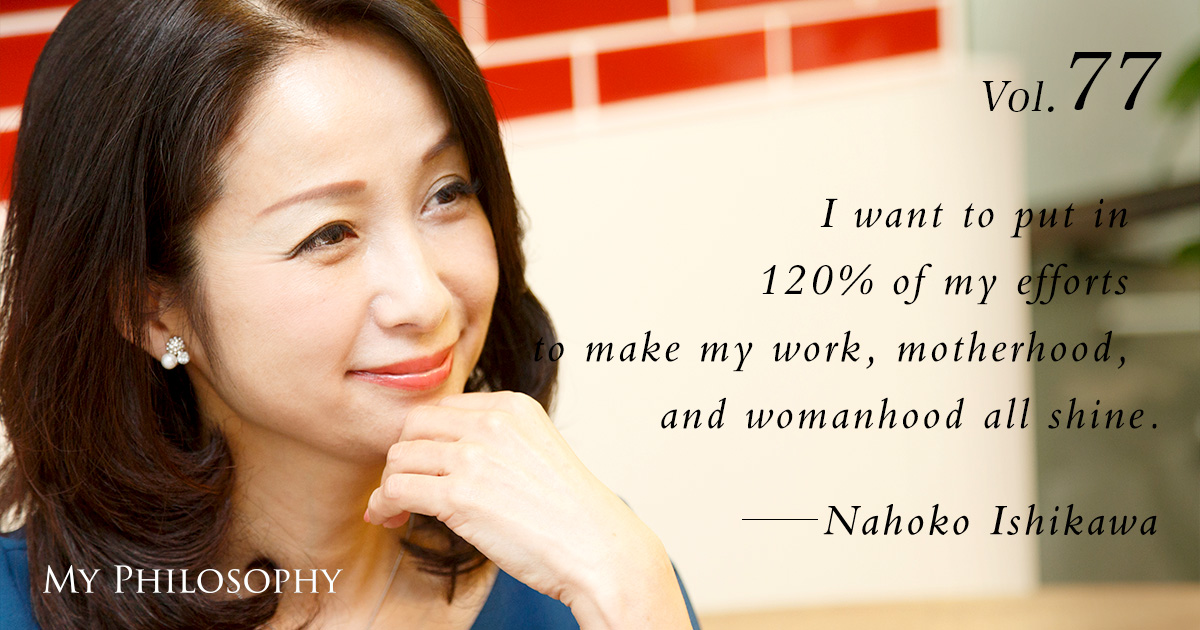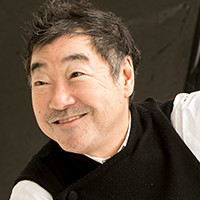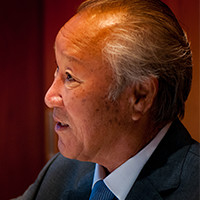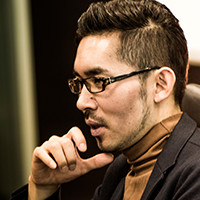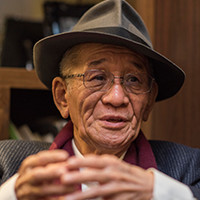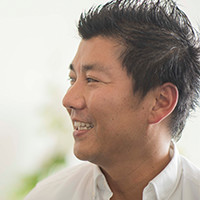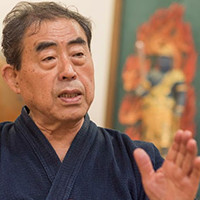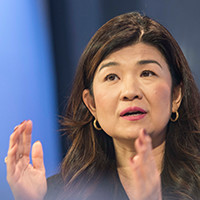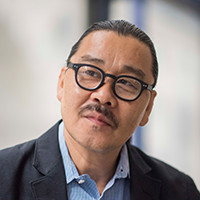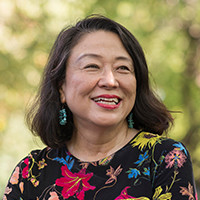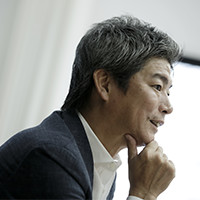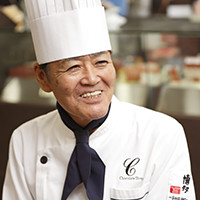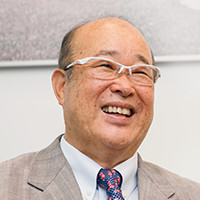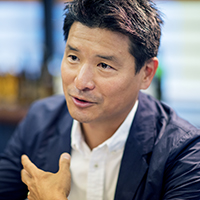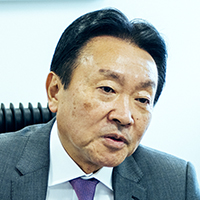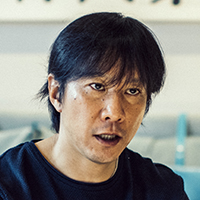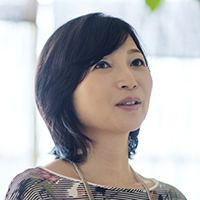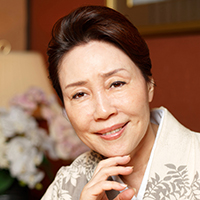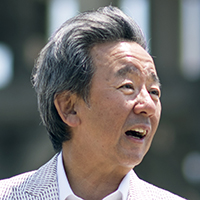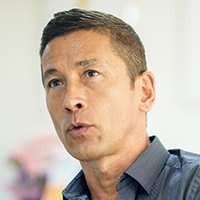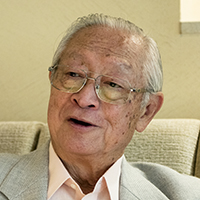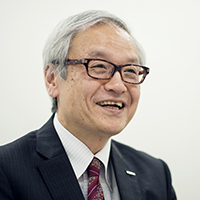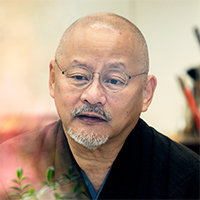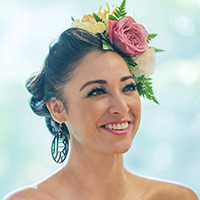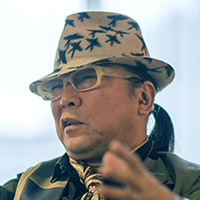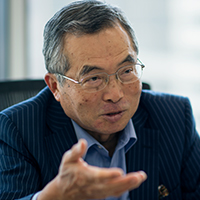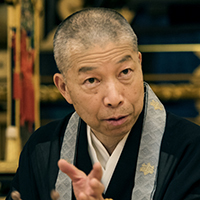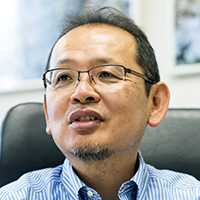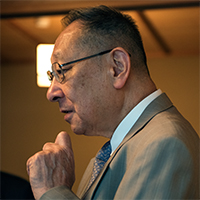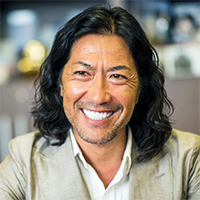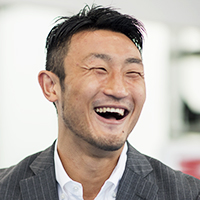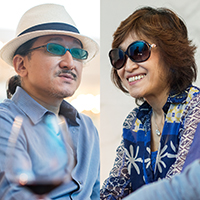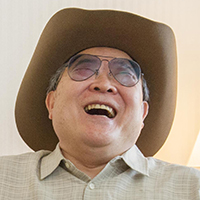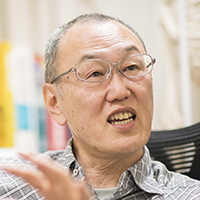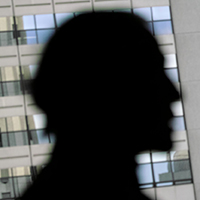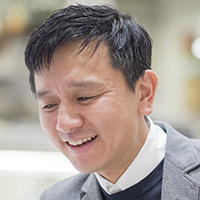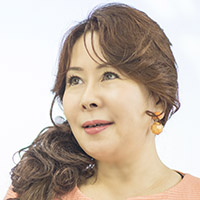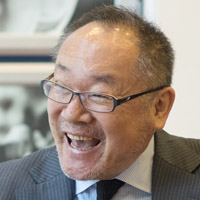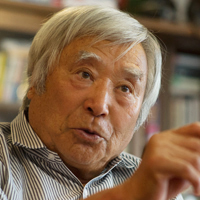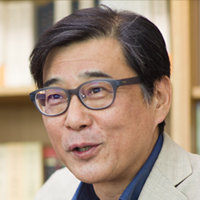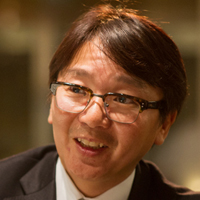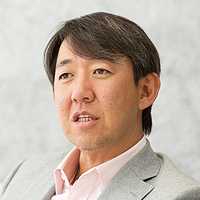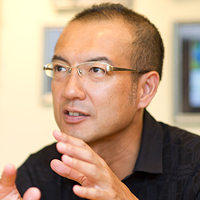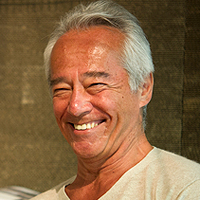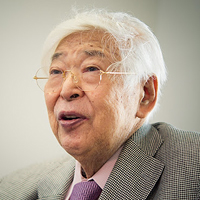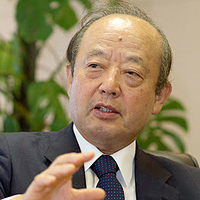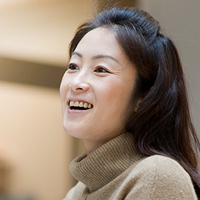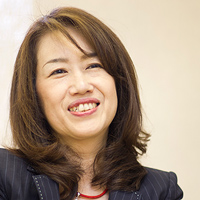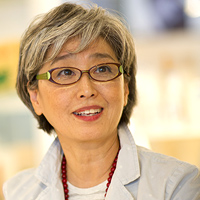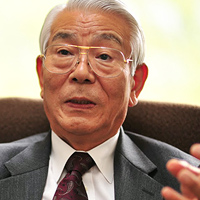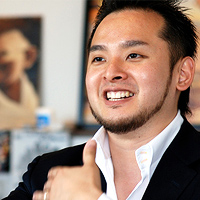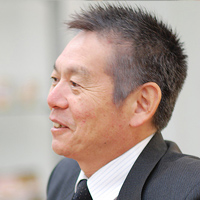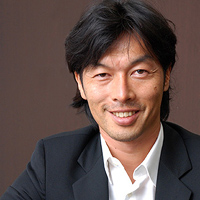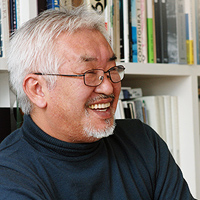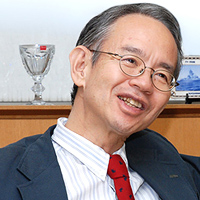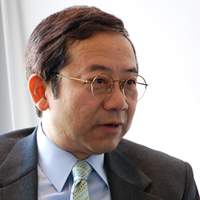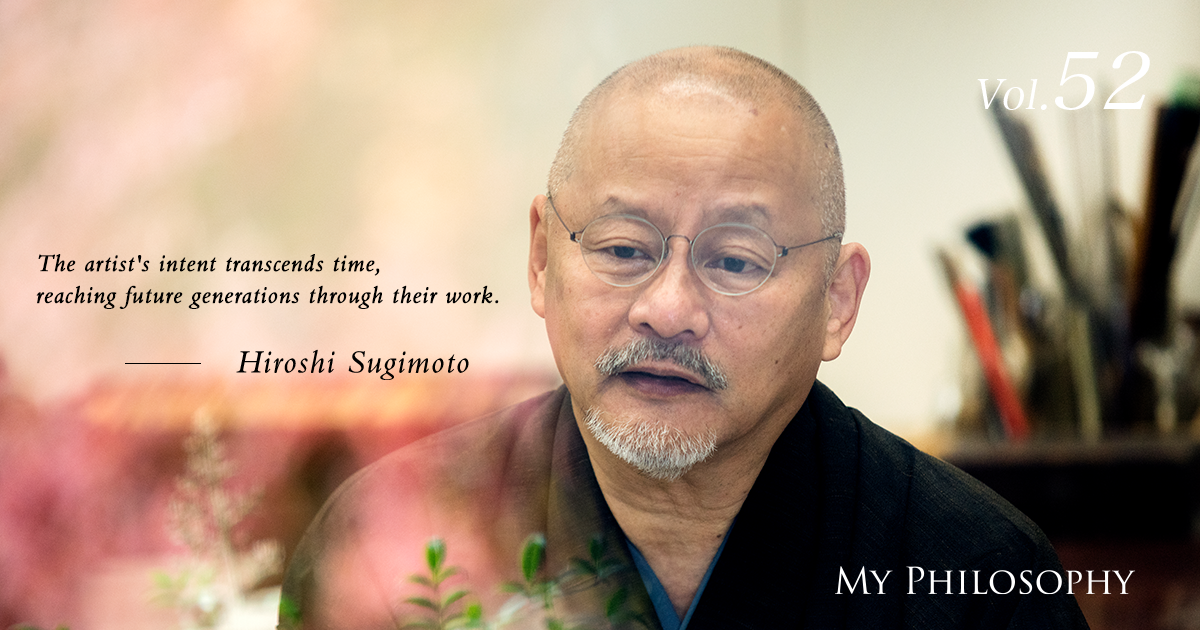
In November 2016, Japanese painter Hiroshi Sugimoto dedicated his ceiling painting "Autumn Leaves" at the guest hall of Taimadera Nakanobo in Katsuragi City, Nara Prefecture. We spoke with Mr. Sugimoto about his creative process and his thoughts on art.
Profile
Vol.52 Hiroshi Sugimoto
Japanese Painter | Specially Appointed Professor at Yokohama University of Art and Design
Born in Tokyo in 1951, Hiroshi Sugimoto graduated from the Japanese Painting Department at Tokyo National University of Fine Arts and Music and completed his graduate studies at the same institution. In 1989, he created fusuma (sliding door) paintings for the Osaka branch of Izumo Taisha Shrine. In 1993, he crafted a fan design for the Akishino-no-miya family. In 1999, he produced a wall painting for the Keihin Fushimi Inari Shrine’s assembly hall. In 2004, he was appointed as Special Advisor for Cultural Exchange, Agency for Cultural Affairs, Government of Japan.
Over the years, he has held more than 30 solo exhibitions, including one at the Art Gallery of Greater Victoria in Canada. He has also actively participated in numerous exhibitions, such as the "Ome Art Jam," "NHK Heart Exhibition," and the "Great East Japan Earthquake Charity Exhibition." In April 2017, he appeared on NHK's television program "Shiten Ron Ten" to discuss "The Deterioration and Preservation of Cultural Properties."
*Titles and biography are as of April 2017.
Thoughts on Nature

I believe that touching soil and plants is akin to touching the very essence of our planet Earth. For those living in urban environments, many might go an entire day without ever making contact with the earth. I strive to use paints made from natural minerals whenever possible. Recently, I have also rediscovered the charm of sumi ink, created by collecting soot from burned plants and forming it into sticks with animal glue. Using a stone inkstone, I grind this ink, and with brushes made from animal hair, I paint on paper crafted from plants. This process allows me to capture the essence of nature in my work, giving me a constant sense of connection with the Earth.
However, about 30 years ago, the view from the window of my studio in the city center was limited to the neighboring houses. Desiring a work environment where I could see only the sky and greenery from my studio window, I moved away from the city center in 1989 to a riverside location in Ome City, Tokyo. My studio, set in an ideal place with views of just the greenery and the river, allows me to lie on the riverbank or walk with my dog during breaks. While there are inconveniences compared to city life, these are outweighed by the invaluable benefits of this setting.
In 2010, I also established a studio called “Mushikago-an” in Gojo City, Nara Prefecture. Blessed with nature and steeped in history, both Ome and Nara have made me realize that my true expression lies in my connection to nature and the Earth. They have also prompted me to reflect on where I come from and where I am headed.
Art Connecting Across Time

In the depths of the Nara mountains, I feel as though everything I have seen in various places, including the remote areas of Southeast Asia and China, is encapsulated here. Currently, I am gradually uncovering the history and traditions that lie dormant in this region, reconstructing them through the form of water and expressing them in my works.
Occasionally, I come across pieces that make me think the old painters might have created them with similar feelings. Such artworks allow me to have a conversation with the artist through the painting. The same goes for music. No one alive today has met Mozart, but by listening to his music, we can touch his personality and feel the atmosphere of the time in which he composed.
When we view a favorite painter’s work, it can make our hearts race or bring us to tears. This profession allows us to evoke a range of emotions in the viewers. Whether it’s through painting, music, or film, the audience receives the artist’s thoughts and messages through their own internal receivers, enabling a conversation and connection with the artist, even without meeting them. This is why there are people who risk their lives to protect the works left behind by deceased artists from the ravages of war. It is impossible not to believe in the vitality that exists within paintings.
The Importance of Cultural Heritage Preservation
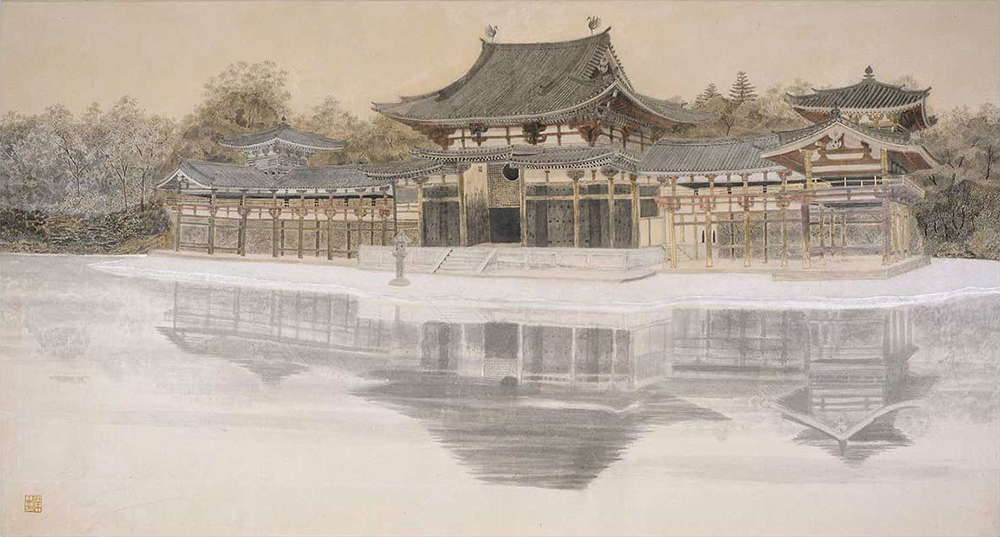
The Phoenix Hall of Byodoin/ 2003 / 120cm×204cm / Japanese paper, metal leaf, sumi ink
During the Meiji Restoration, Japan actively adopted Western culture to catch up with Western powers. Historically, many countries have completely destroyed the remnants of previous dynasties to build something entirely new. However, Japan did not completely discard its unique cultural heritage. The Shosoin, the oldest repository and museum in the world, still houses art, crafts, and books from over 1,300 years ago. Japan has maintained its old traditions while incorporating new elements. The techniques used to repair damaged or broken ancient items are particularly remarkable. For example, the art of kintsugi involves repairing broken pottery with lacquer mixed with powdered gold, silver, or platinum, highlighting rather than hiding the repairs. This concept gives birth to a new form of beauty, reflecting a unique aesthetic that goes beyond the concept of “wabi-sabi.”
The Agency for Cultural Affairs, under the Ministry of Education, Culture, Sports, Science, and Technology (MEXT), is responsible for cultural heritage protection in Japan. However, due to MEXT’s broad jurisdiction over science and education, the budget for cultural heritage protection is minimal. Despite Japan’s larger national budget compared to South Korea, its cultural budget is only about half that of South Korea. Japan is one of the few countries that invests heavily in the economy but very little in culture. Additionally, the number of professionals capable of restoring various artworks is declining, and restoration costs are rising.
Given these circumstances, I wanted to create a system for training personnel to restore precious artworks affordably. This led to my involvement in training students at Yokohama University of Art and Design, aiming to become restoration professionals. As of this April, a new system for preservation and restoration as a cultural and educational project has been launched, making Yokohama University of Art and Design the first university in the Tokyo metropolitan area to offer a restoration course within its art faculty.
Continuing What You Love

I have loved drawing since I was a child and began to dream of becoming a painter in junior high school. During high school, my art teacher introduced me to Japanese painting, and I continued pursuing what I loved through my university years, despite having to take a gap year. Life presents various choices. During high school entrance exams, the school guided me toward prestigious schools, but no matter how hard I tried, I couldn’t achieve top grades in my class. I realized that the academic world wasn’t my place. When I considered a career where I could secure my place, I turned to painting. While many were better at drawing than I was, my passion for painting has fortunately allowed me to continue as an artist.
Someday, I hope to present a painting I am truly satisfied with to the world. This desire isn’t driven by the ambition of being featured in global media or receiving high accolades. Rather, I want people to understand my worldview through my work, and it would be fascinating to connect with those who resonate with it, creating a global network. Moving forward, I want to continue as a modern artist rooted in ancient Japanese traditions, expressing through my works the treasures I discover in the jewel box of the Nara mountains.
Meeting Mr. Sugiyama, one can’t help but feel the privilege of youth emanating from his active and free-spirited approach to life. Many who have met him share this sentiment.
Reading his books reveals a sensibility shaped by his upbringing abroad. He seems to channel this unique perspective into his business ventures. It will be exciting to see how he engages with, influences, and transforms this country in the future.
Japanese Painter, Hiroshi Sugimoto
The first thing that caught my eye when entering the studio was the array of natural pigments made from finely crushed stones. Hearing that these colors were created using the same methods as those in Leonardo da Vinci’s time made me realize my own lack of knowledge about materials and deepened my appreciation for the profound world of painting. When Sugimoto-sensei paints animals, he obtains taxidermy specimens to meticulously study their details before completing his works. This thorough approach to his art reflects his lifestyle. The passion for painting that began in his childhood has been elevated to a professional level through his efforts and the dedicated support of his wife, which I find truly admirable (laughs).
From the Tama River flowing behind his home studio in Ome, I felt the energy of the earth. This summer, I plan to visit for some fun by the river and bring along some delicious “Premium Malts” beer!
December 2016, at Hiroshi Sugimoto’s home studio in Ome.Translated by ILI Inc.











